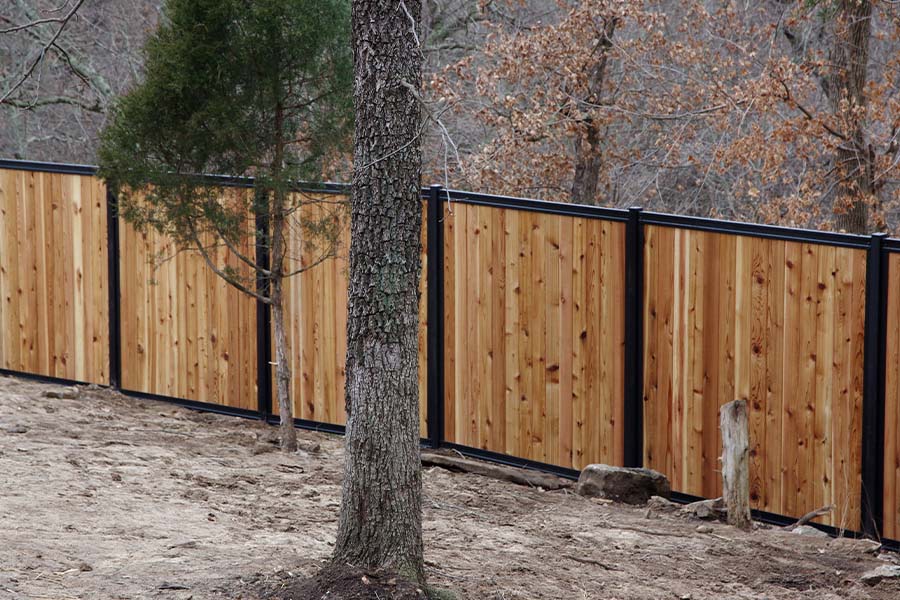All Categories
Featured

Whether it's solid winds, rainfall, snow, or extreme warm, weather conditions can slowly weaken your fence, leading to pricey repair services or replacement. There are several steps you can take to secure your fence from weather-related damages and extend its life-span.
- Select the Right Material. The type of material your fencing is made from plays a substantial duty in exactly how well it will endure weather. Some materials are normally a lot more resistant to damage than others. :
Wood Fencings: While timeless and stunning, timber can be vulnerable to dampness, rot, and insects. Pressure-treated wood or cedar can offer better resistance to these issues. Vinyl Fencings: Plastic is very resistant to dampness, rot, and parasites. It also stands up well to severe sun and hefty rain. Steel Fencings: Wrought iron or aluminum fencings are resilient and can stand up to a range of weather conditions. They can, nevertheless, deal with rust with time, particularly otherwise properly covered. Compound Fences: Made from a mixture of wood fibers and plastic, composite fencings are extra resistant to weather-related damage compared to conventional timber fencings. Picking the appropriate product for your area's climate is the initial step in safeguarding your fence from weather condition damage.
- Seal or Discoloration Wooden Fences. Wood fences are particularly at risk to harm from wetness, UV rays, and temperature level fluctuations. One of the most reliable methods to secure your wood fencing is by applying a safety sealant or tarnish. These products aid:
Prevent Water Damage: Sealants create a waterproof obstacle, preventing moisture from permeating into the wood and creating rot, mildew, or mold. Protect Versus UV Damage: An excellent stain or sealant will also block unsafe UV rays from the sunlight, which can cause timber to dry, crack, and stain in time. Maintain the Fencing's Appearance: Regular discoloration assists preserve the natural appeal of the timber and prolongs its life-span. It's suggested to reapply the stain or sealant every 1-- 2 years to maintain your surround excellent condition.
- Set up a Barrier for Wind Defense. Solid winds can cause considerable damages to your fencing, particularly if it is weak or high. Wind can bend or damage wooden panels, loosen up fence blog posts, or also trigger the whole fence to collapse. Installing a windbreak-- such as growing bushes, bushes, or installing a mesh obstacle-- can help safeguard your fencing from high winds.
Furthermore, you can reinforce the blog posts with concrete or metal dental braces to offer extra security and protect against leaning or shifting.
- Trim Overhanging Branches. Falling branches can damage panels or harm the fencing blog posts, leading to costly fixings. Maintaining the branches cut back minimizes the danger of branches breaking off and triggering damages to the fence.
- Routine Inspections and Upkeep. Doing regular maintenance and examinations is key to capturing prospective problems prior to they escalate. After a hefty tornado, evaluate your fencing for any indicators of damages, such as loosened panels, leaning messages, or broken sections. Caring for tiny concerns prior to they become bigger ones can aid prolong the life of your fencing.
Furthermore, cleansing your fencing periodically to get rid of dust, particles, or mold and mildew can help maintain its appearance and integrity. For wooden fencings, carefully stress clean the surface to eliminate built-up crud, and for vinyl fencings, utilize a light detergent to clean any discolorations.

- Make Sure Appropriate Water Drainage. Water damage is just one of one of the most usual weather-related concerns that impact fencings. Poor drainage can cause standing water around your fence messages, which can cause the blog posts to rot or compromise with time. To avoid this, make sure the ground around your fence slopes away from the articles. You may likewise wish to set up drain solutions such as French drains or crushed rock at the base of the blog posts to stop water from pooling.
- Apply a Safety Coating to Metal Fences. Steel fencings, such as those made from iron or steel, are very long lasting yet can be prone to rust otherwise appropriately maintained. Applying a protective finish or paint that is especially made for steel can help protect against rust and corrosion. Make certain to examine the fencing periodically for any type of indications of rust, and address it quickly by fining sand and painting the affected areas.

Final thought. Your fencing is a useful financial investment, and shielding it from weather-related damage will assist make sure that it continues to serve its function for several years ahead. By picking the right products, consistently preserving your fencing, and taking steps to safeguard it from the aspects, you can minimize weather-related damage and expand its life-span. Whether you're handling strong winds, hefty rain, or the rough sunlight, these basic steps can go a lengthy means in maintaining the condition and look of your fence, saving you time and money in the long run.
Latest Posts
How Consistent Vehicle Maintenance at Montclare Auto Repair Reduces Costs
Published en
1 min read
Uncover Montclare Auto Repair’s Most Popular Services and Why Drivers Trust Them
Published en
1 min read
Discover Why Chicago Drivers Prefer Montclare Auto Repair for Trusted Service and Great Savings
Published en
1 min read
More
Latest Posts
How Consistent Vehicle Maintenance at Montclare Auto Repair Reduces Costs
Published May 31, 25
1 min read
Uncover Montclare Auto Repair’s Most Popular Services and Why Drivers Trust Them
Published May 26, 25
1 min read
Discover Why Chicago Drivers Prefer Montclare Auto Repair for Trusted Service and Great Savings
Published May 25, 25
1 min read